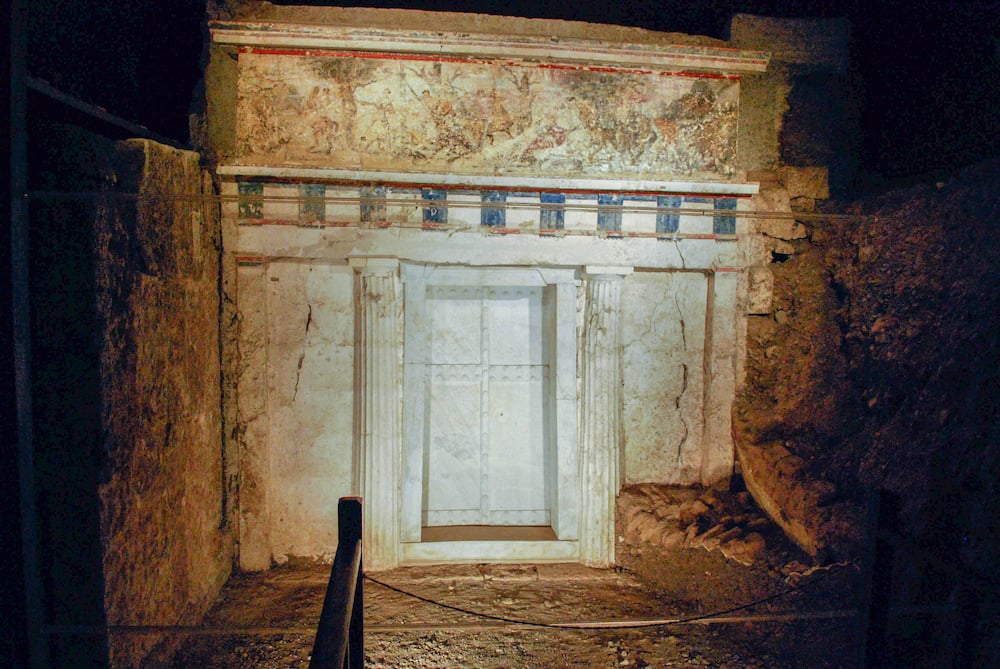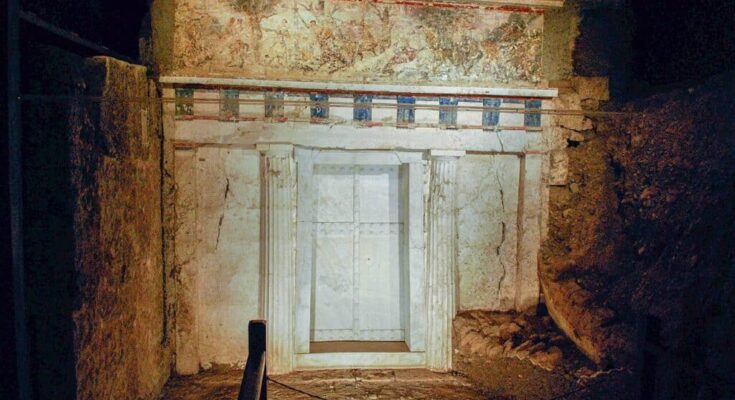
Scientists have revealed the identities of the occupants of the unspoiled 4th-century BCE Royal Tombs at Vergina in northern Greece.
The burials contain the remains of Alexander’s father, stepmother, half-siblings, and son, along with armor and other items belonging to the man himself.
While there is never been any doubt that the human skeletal remains found in Royal Tombs I, II, and III belong to close relatives of Alexander, scholars have spent almost half a century bickering over who exactly lies within each grave.
Scientists from Greece, Spain, and the U.S. examined the skeletal elements with the aid of macrophotography, radiographs, and anatomical dissection. The study authors combined osteological analyses, macro photography, X-rays, and anatomical dissections of the ancient remains with historical sources from the ancient past.
The results were published recently in the Journal of Archaeological Science.
Occupants of Macedonian Tombs at Vergina
Tomb I: King Philip II, Cleopatra and baby
A knee fusion was found in the male skeleton of Tomb I consistent with the historic evidence of the lameness of King Philip II. Researchers discovered that Tomb I contained the bones of a man with an injured knee, as well as a woman and a baby, who was just days or weeks old at the time of death.
They conclude that the male figure was Alexander the Great’s father, King Philip II of Macedon, who was known to limp. The infant’s extremely young age is also consistent with the story of Philip’s assassination in 336 BCE.
According to most sources, Philip II was assassinated by his bodyguard only a few days after his wife Cleopatra gave birth. The murder is thought to have been ordered by Philip’s previous wife, Olympias, the mother of Alexander the Great. Almost immediately after the assassination, Olympias killed Cleopatra and her baby, possibly by burning them alive, paving the way for Alexander to succeed to the throne.
Tomb II: Alexander’s brother and his wife
Previously, some scholars claimed that Philip II was buried in Tomb II, which also houses the remains of a man and a woman. However, the absence of a baby, combined with no obvious signs of physical trauma on the male skeleton, eliminates this possibility.
Researchers concluded that Tomb II belonged to the “warrior woman” Adea Eurydice, wife of Alexander’s half-brother King Arrhidaeus. They reached this conclusion based on skeletal evidence for excessive horseback riding.
“Due to ancient depictions and descriptions, some scholars have suggested that some of the objects in Tomb II, such as the armor, belonged to Alexander the Great, which is possible only if this is the Tomb of Arrhidaeus, not Philip II,” write the authors.
Thus, these remains are determined to be those of “Alexander’s much less impressive brother” and his rather impressive warrior wife. Sources hint that this was an unequal marriage because the king was disabled mentally.
The evidence presented supports the conclusion that Tomb I belongs to King Philip II, his wife Cleopatra, and their newborn child. Tomb II belongs to King Arrhidaeus and his wife Adea Eurydice.
Tomb III: Alexander’s son
Lastly, the study’s authors discover no evidence to challenge the widely held belief that Alexander IV, Alexander the Great’s teenage son, is buried in Tomb III.
The study by Antonis Bartsiokas, Democritus University of Thrace, Juan Luis Arsuaga, Universidad Complutense de Madrid, and Nicholas Brandmeir, West Virginia University disproves the theory that among the occupants of the ancient tombs was Alexander the Great.
This theory was suggested by world-renowned University of Sorbonne historian Helen Glykatzi-Ahrweiler, who argued recently the tomb excavated by Manolis Andronikos and identified with Phillip II of Macedon is in fact, Alexander’s.
Related: Greece Opening Restored Palace of Aigai, the Parthenon of Macedonia



